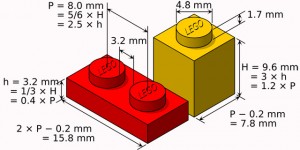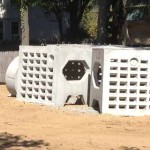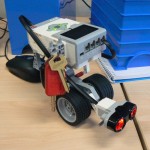Technology is the knowledge or expert skill of how to make things, from the Greek words technos (art or skill) and –ology (branch of knowledge), typically through the use of tools. Typical examples of technologies include such things as baking, weaving, soldering, injection molding, welding, glass making, or semiconductor manufacturing.
Technology (process/tool skills) should be distinguished from the products of technology, which can be referred to as technological artifacts. Indeed, most allegations of technological theft refer not to theft of physical items, but rather to unauthorized copying of processes, from weaving technology in the early Industrial Revolution, to Samsung’s creation of smartphones highly similar to those of Apple.

In the late 1990’s, Mindstorms robotics technology was added, permitting programmable control of systems using motors, sensors, and programmable controllers. All of these systems enable users to easily create and modify prototypes, which are functioning models of designs.
In LEGO robotics, technologies being learned include how to mechanically assemble the various components, including beams, pins, gears, etc.; how to use motors and sensors, and how to utilize the MINDSTORMS programming environment to compose and download programs to the robot.
See also What is engineering? and What is the difference between engineering and technology?
Jonathan Dietz
Latest posts by Jonathan Dietz (see all)
- Challenges in K-12 engineering education: Lessons from Massachusetts - 18 January 2015
- What is the difference between engineering and technology? - 18 November 2014
- What is technology? - 11 November 2014
- What is engineering? - 6 November 2014
- Learning Dimensions: Another way to assess - 6 November 2014


